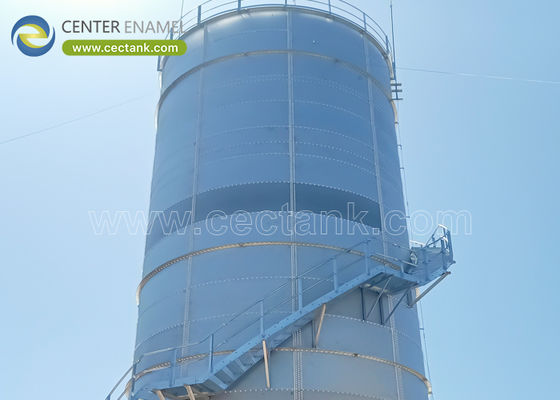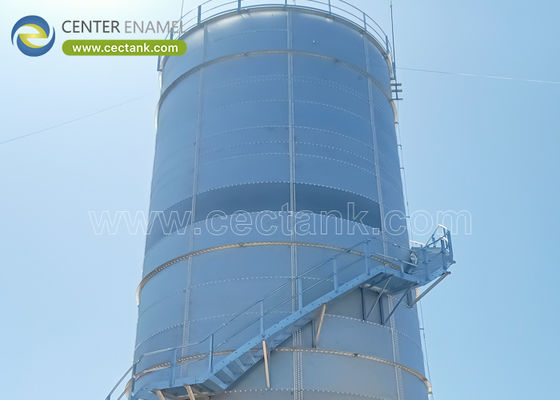-
Vetro fuso a serbatoi di acciaio (419)
-
carri armati di acciaio inossidabile (387)
-
La fusione ha legato i carri armati a resina epossidica (424)
-
Serbatoi in acciaio galvanizzato (321)
-
Tetti di alluminio della cupola (797)
-
Serbatoi di stoccaggio delle acque reflue (226)
-
serbatoi di acciaio saldato (297)
-
Contenitori a pressione (295)
-
Digestore anaerobico (201)
-
Serbatoi di acqua industriali (349)
-
Serbatoi in acciaio rivestiti di vetro (180)
-
Serbatoi di acciaio serrati (181)
-
Serbatoio del fango (115)
-
Serbatoio del biogas (173)
-
Serbatoi di stoccaggio di lixiviazione (133)
-
Serbatoi di stoccaggio dell'acqua agricola (179)
-
Serbatoio dell'acqua di fuoco (166)
-
Silos di stoccaggio del grano (130)
-
Progetti di biogas (349)
-
Progetti di trattamento delle acque reflue (270)
-
Tetti a doppia membrana (177)
Stainless Steel Emergency Fire Water Tanks: Reliability, Hygiene, and Ready Response for Critical Safety
| Luogo di origine: | Cina |
| Marca: | CEC TANKS |
| Certificazione: | ISO 9001:2008, AWWA D103 , OSHA , BSCI |
| Numero di modello: | W |
| Quantità di ordine minimo: | 1 set |
| Prezzo: | $5000~$20000 one set |
| Imballaggi particolari: | Polischiuma PE tra ciascuna due piastre di acciaio; pallet di legno e legno |
| Tempi di consegna: | 10-30 giorni dopo il deposito ricevuto |
| Termini di pagamento: | L/C, T/T |
| Capacità di alimentazione: | 60 set al mese |
|
Informazione dettagliata |
|||
Descrizione del prodotto
Stainless Steel Emergency Fire Water Tanks: Reliability, Hygiene, and Ready Response for Critical Safety
In emergency response and fire protection, the reliability of the water reserve is non-negotiable. Emergency fire water tanks must deliver instant access to clean, uncontaminated water under demanding conditions, from heat exposure to earthquakes and extreme weather. Stainless steel emerges as a premier material choice for these tanks due to its corrosion resistance, structural robustness, hygienic finishes, and long service life. Center Enamel brings deep expertise in designing, fabricating, and delivering stainless steel storage solutions, translating safety codes, site realities, and operational needs into resilient tanks that safeguard lives and assets.
As a leading storage tank manufacturer worldwide. Center Enamel can provide Glass Lined Steel(GLS) tanks, fusion bonded epoxy tanks, stainless steel tanks, galvanized steel tanks and aluminum geodesic dome roofs, Wastewater and Biogas Project Equipments for global customers.
| Configuration of Customized Storage Tanks | ||||
| Storage tanks | Volume | Roofs | Application | Design Requirements |
|
GLS Tanks SS Tanks Fusion Bonded Epoxy Tanks Galvanized Steel Tanks Welded Steel Tanks |
<1000m³ 1000-10000m³ 10000-20000m³ 20000-25000m³ >25000m³ |
ADR Roof GLS Roof Membrane Roof FRP Roof Trough Deck Roof |
Wastewater Treatment Project Drinking Water Project Municipal Sewage Project Biogas Project Fire Water Storage Project Oil Storage Project |
Water Supply & Drainage System Seismic Design Wind Resistant Design Lightning Protection Design Tank Insulation Design |
WasteWater Treatment Project Equipment Supply
| Pretreatment Equipment | Resource Utilization System | Sludge Treatment System | Other Equipment |
|
Mechanical Bar Screen Solid-liquid Separator Submersible Mixer |
Gas Holder Boiler System Boost Fan Bio gas Generator Torch System Dehydration and Desulfurization Tank |
PAM Integration Dosing Device Screw Sludge Dewatering Machine Slurry Separation Centrifuge |
Sewage Pump Mud Scraper Submersible Sewage Pump Three-phases Separator |
Why stainless steel for emergency fire water storage
- Unmatched corrosion resistance in challenging environments: Fire water tanks face constant exposure to moisture, oxygen, and potentially aggressive water additives or treatment chemicals. Stainless steel resists rust and chemical attack, preserving water quality and tank integrity over decades. This durability reduces maintenance burdens and the likelihood of leaks that could undermine firefighting readiness. Center Enamel’s welded and bolted stainless steel solutions emphasize corrosion resistance across joints and fittings, contributing to dependable performance in the field.
- Hygiene and water quality assurance: In emergencies, the water stored must remain readily usable with minimal risk of contamination. Stainless steel’s smooth, non-porous interior surfaces facilitate thorough cleaning, minimize biofilm formation, and support routine disinfection when required. This is especially important for potable or near-potable firefighting water supplies and for facilities managing multiple safety-critical systems.
- Structural integrity and reliability: Fire protection tanks are subjected to full water hydrostatic pressure, dynamic loads during filling and drawing, and environmental stresses. Stainless steel provides excellent strength-to-weight characteristics, fatigue resistance, and resilience against deformation, supporting reliable performance during a fire event when every second counts. Center Enamel emphasizes robust joint design, leak-tight connections, and proper anchoring to maximize uptime.
- Lifecycle economics and long-term value: Although initial material costs may be higher than some alternatives, stainless steel tanks generally offer lower lifecycle costs due to longer service life, reduced corrosion-related degradation, and lower maintenance needs. For municipal, industrial, and large commercial projects, the total cost of ownership often favors stainless steel over many other materials.
Key design considerations for emergency fire water tanks
- Material grade selection: Common choices include 304 and 316 stainless steels, with 316 offering enhanced corrosion resistance in humid environments or where chlorides are present. For specialized applications, duplex or higher-nickel alloys may be considered. Center Enamel collaborates with clients to select the optimal grade based on water quality, climate, cleaning regimes, and local standards.
- Tank configuration: Emergency fire water tanks can be bolted sectional designs or welded tanks. Bolted designs enable rapid deployment, modular expansion, and easier transport to remote sites, while welded tanks provide a seamless interior and potentially lower long-term maintenance in certain installations. The project context, logistics, and service expectations guide the fabrication approach.
- Capacity planning and layout: Tank size typically aligns with fire suppression system design flows, local code requirements, and redundancy strategies. For multi-site facilities or campuses, a standardized family of tank sizes improves procurement efficiency and maintenance planning. Modular configurations support phased capacity growth as risk assessments evolve.
- Interior finishes and sanitary considerations: Interior surface finishes should balance cleanability, abrasion resistance, and cost. A smooth, polished interior reduces particle adherence and simplifies cleaning between shifts or tests. Exterior finishes protect against weathering in outdoor installations. Center Enamel tailors surface treatments to project conditions and hygiene expectations. [Finish selection]
- Discharge, venting, and fittings: Fire water tanks require carefully designed outlets, safe venting, and reliable connections to firefighting equipment (labeled outlets, ball valves, quick-connect fittings, and readiness for CFA-style connections where required by local authority). Materials must withstand cleaning agents and frequent inspections.
- Seismic, wind, and foundation requirements: Structural design must account for local seismic, wind, and soil conditions. Proper anchoring, foundation detailing, and bracing are essential to maintain integrity during seismic events and dynamic loading during firefighting operations. Center Enamel provides site-specific engineering guidance to ensure compliance.
Standards, compliance, and testing
- Fire protection standards and guidelines: Emergency fire water tanks must comply with applicable national and regional standards and codes governing fire protection systems, water storage, and safety. This often includes alignment with recognized design standards, performance criteria, and third-party verification during procurement and installation. Center Enamel designs with these frameworks in mind to facilitate smooth approval processes.
- Material and fabrication standards: Stainless steel tanks for fire protection are manufactured under strict quality control regimes, including material traceability, weld quality, and join integrity. Factory acceptance testing and on-site commissioning are standard to verify leak-tight performance and readiness for emergency service.
- Water quality and source considerations: Depending on whether the stored water is potable or non-potable, interior finishes and treatment provisions may differ. Center Enamel ensures compatibility with local water sources, treatment regimes, and regulatory expectations for emergency storage.
- Commissioning and performance verification: Pre-commissioning checks, leak testing, functional testing of outlets and vents, and integration with fire protection systems are essential to confirm readiness. Staff training on operation, maintenance, and inspection schedules is typically included.
Manufacturing and fabrication approaches
- Bolted sectional design: Bolted panels allow rapid deployment, easier shipping, and scalable capacity. Sealing gaskets and bolt integrity are critical for leak prevention and long-term performance. Center Enamel’s engineering focus includes precise gasket selection, material compatibility, and secure bolting strategies.
- Welded tanks: Welded constructions provide a seamless interior and can simplify cleaning and inspection, particularly in high-demand environments. Welded tanks may be preferred where the highest interior integrity is required or where local fabrication support favors welding. Center Enamel tailors the approach to project constraints.
- Access, instrumentation, and integration: Tanks are designed with safe access points for inspection and with provisions for instrumentation, alarms, and control integration. Early coordination with fire protection systems minimizes retrofit needs and ensures reliable operation during emergencies.
Coatings, finishes, and interior protection
- Interior finishes: A smooth interior reduces debris accumulation and simplifies cleaning, contributing to water readiness and system reliability. Finishes are selected to balance sanitation, abrasion resistance, and cost.
- Exterior protection: Outdoor tanks benefit from weather-resistant coatings and corrosion protection to maintain performance in varying climates.
- Lining options: Some projects may require internal linings or coatings for abrasion resistance or chemical compatibility; decisions are based on water quality, maintenance plans, and lifecycle cost trade-offs. Center Enamel conducts thorough evaluations to choose the best approach.
Installation, commissioning, and lifecycle support
- Site readiness and foundations: Level, properly reinforced foundations and secure anchorage are essential for stability under fill and surge conditions. Center Enamel collaborates with civil teams to ensure site readiness.
- Commissioning and turnover: Comprehensive commissioning verifies structural integrity, seal performance, and the functionality of discharge and vent systems. Operator training ensures safe, effective long-term use.
- After-sales service and spare parts: A robust spare parts program and responsive service network minimizes downtime and maintains compliance over the tank’s life. Center Enamel supports customers with ongoing service and upgrade options.
Applications and value across industries
- Industrial facilities and utilities: Fire protection tanks support critical suppression systems in factories, data centers, warehouses, power plants, and other essential infrastructures, providing reliable water reserves for emergencies.
- Commercial and public buildings: Hospitals, universities, campuses, and large commercial complexes require dependable fire water storage with scalable capacity and straightforward maintenance.
- Municipal and safety programs: Municipalities and utilities benefit from modular, code-aligned designs that adapt to evolving safety standards and demand growth.
- Potable vs non-potable considerations: Depending on the water source, interior configurations may favor potable-grade or non-potable setups; Center Enamel ensures appropriate material choices and compliance.
Sustainability and environmental considerations
- Recyclability and lifecycle stewardship: Stainless steel is highly recyclable, supporting sustainability goals by enabling end-of-life reuse and reducing waste. This aligns with responsible procurement and long-term asset stewardship.
- Energy and water efficiency in maintenance: Efficient cleaning and low porosity interiors reduce water and chemical usage during maintenance cycles, contributing to lower environmental impact and operating costs.
Stainless steel emergency fire water tanks offer a compelling combination of corrosion resistance, structural integrity, hygienic interiors, and scalable design for critical safety applications. Center Enamel’s approach—leveraging material science, modular fabrication, and a global service footprint—delivers reliable, code-compliant, and cost-effective emergency water storage solutions. For facilities seeking robust, maintainable, and future-ready fire protection storage, stainless steel tanks from Center Enamel provide a proven path to safeguarding communities, assets, and operations during fire incidents.




